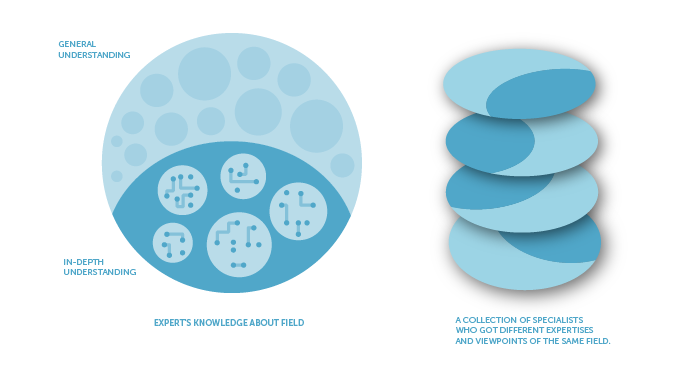Mapping the DNA of Disciplines
A text by Ola Möller (founder) & Jordan Lane (co-author of the MethodKit architecture kits)
Below we are describing the disassembly of a field into cards.
It is often possible to define the crucial parts and practices of a field fairly quick. Most people undertake this process over and over again. When trying to plan something the answers can often be found in understanding the code of a field.
When starting a restaurant the parts might be:
Staffing (chefs, dish washers, waiters, wages), menu, interior, furniture, lighting, food type, branding, opening hours, payment options, target group, marketing, guest experience, signage, the grand recipe book, reviewers, service level, food supplier, wine list, legal permissions (eg. tax office, grease trap) and kitchen hygiene.
It is often easy to define 70% of a field. The devil is in the last 30% — the things that are critical, but do not immediately come to mind. One way to combat this is to write down what you need to remember next time. Over time, these notes can accumulate into a quite accurate and complete list.
“Sooo, what do we need to think about now?”
Defining the code of general projects is a way to create a tool and to solve the problem of “Sooo, what do we need to think about now?”…permanently. To not have to re-define the parts and practices of a project saves time and can maintain momentum.

Hammers & screwdrivers — details in a field
Let us use the example of “handtools” as a field. Within this field there are screwdrivers, knives, saws, scissors and hammers to just name a few. A screwdriver and a hammer achieve the same purpose — to insert a steel member into another substrate. However, if we remind ourselves that “if you walk around with a hammer, every problem looks like a nail”, you quickly realise the need to fit each pattern to context. Try using a hammer with a screw, or using a screwdriver with a nail. It is the same pattern of intent, but an unsuitable disassembly of parts and practices. It is important to disassemble the field in such a way — with holistic understanding — of how to recombine it afterwards.
From wholes to smaller parts
Some parts remain general while some fields needs to be broken down into pieces.

Left: General part. Right: Deep diving bits describing the general part.
The general bits are overviewable pieces, the deep diving bits are smaller parts and provide a deeper understanding of each bit.
Depending on which field is summarized the depth of different aspects need to be different. Some patterns contain smaller patterns, which may contain even smaller details — all of which may be relevant to your context. For example “diet” could be a pattern from the field of personal development that could in itself unfold into a whole new overview of patterns and details. Diet is not just the food we eat but also cultural norms, access to food, purchasing patterns, eating rituals, allergies etc.
Working with groups of experts
While generalists know a little about everything, experts know everything about a little. It’s important to pick a diverse group of experts as they tend to see deep diving parts from the perspective of their sub-fields within a field. Picking a broad group of experts that share complementary knowledge is crucial to creating an accurate pattern language.
The image above illustrates the capacity of involving experts within sub-fields of knowledge. While a expert (left illustration) was able to name the large parts of the overview, involving a diverse group of specialists allows insights into more complex, deep diving parts and processes (right illustration).
Summary
Sometimes we don’t see the forest for the trees. Sometimes we don’t see the trees for the leaves. Sometimes we don’t see the leaves for the sun… and sometimes we are just looking in the opposite direction. Understanding and building a taxonomy of the important parts is a way to help us understand the forest, its relationship with the solar system and how the leaves generate energy. It is a way to move from code/pieces to details and back again.
The overview will not give you all the answers you need to understand the forest, but they allow a flexible and forgiving framework within which you can explore.



